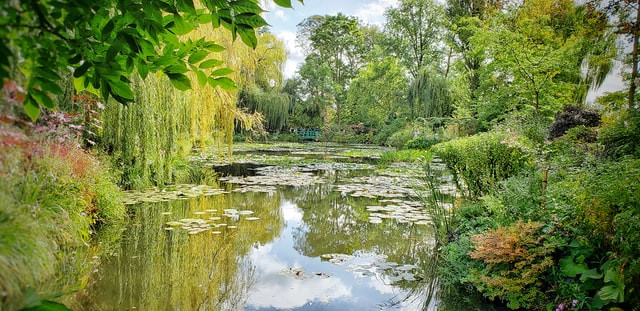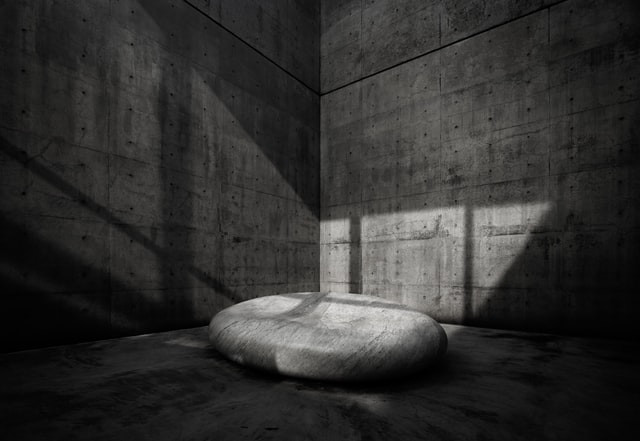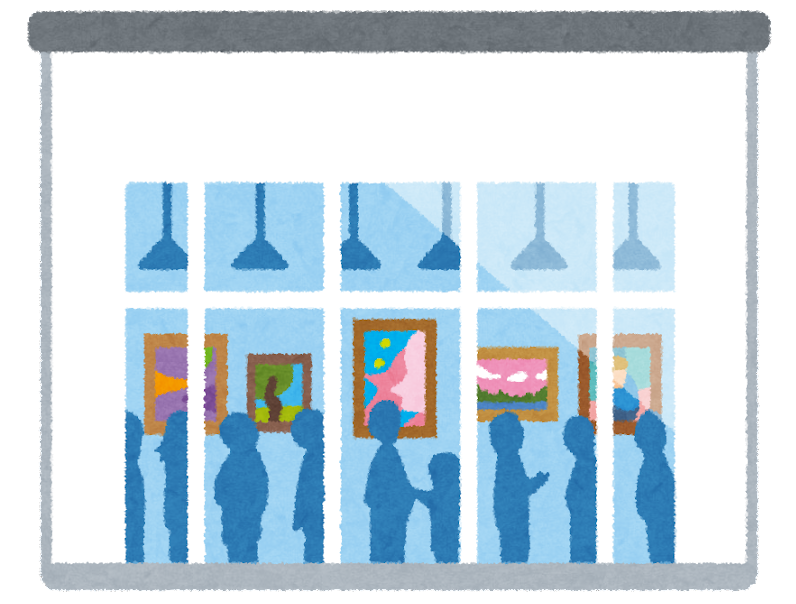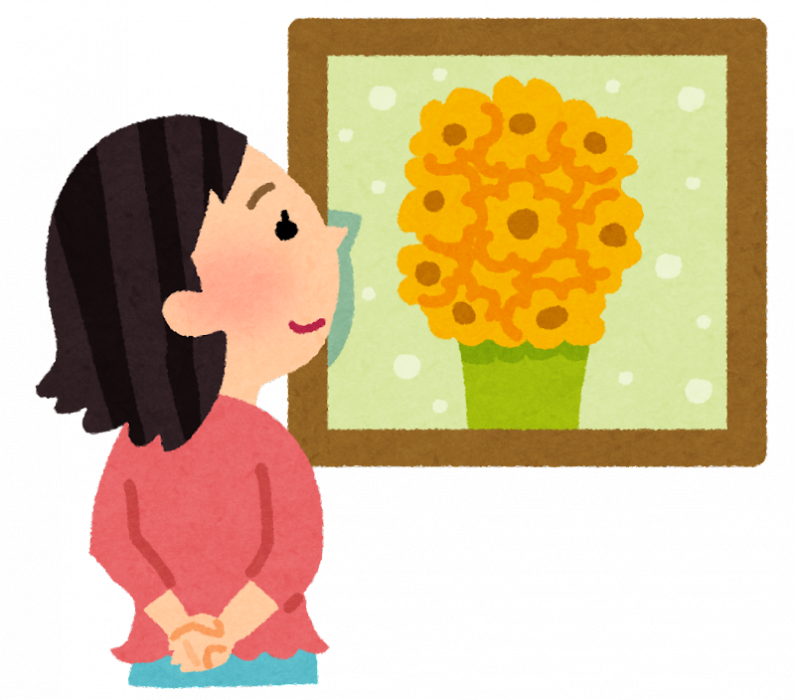Chichu Art Museum on Kagawa Prefecture’s art lovers’ paradise Naoshima Island is a work of art in itself. Almost the entirety of the museum is nestled underground, and the island accessible by ferry only. Its serene atmosphere and unique architecture designed by Tadao Ando is a cultural walk in nature.
Table of Contents
- Background of Chichu Museum
- Artististic Work at Chichu Art Museum
- Other Facilities at Chichu Museum
- Access to Chichu Museum and Ticket Information
- Summing Up
Background of Chichu Museum

The Chichu Museum is an underground museum built into a cliff overlooking the ocean on the island of Naoshima. The museum comprises monolithic concrete blocks and was designed to have complete absence of any material or architectural feature that would make it recognizable as a building.
Located on Naoshima Island on the south coast of Japan, the underground Art Museum was designed purposefully to be in sync with nature. While creating the blueprint, famous Japanese architect Tadao Ando focused on creating a natural marvel with almost no environmental impact on the natural landscape. The result was an "under the earth" art museum covering a space of 2,573 square meters, completed in 2004.
However, the most remarkable feature of this architectural masterpiece is the use of natural sunlight in its design. The daylight influences the entire structure and artworks throughout the day. Abstract, beautiful, unusual, and geometrical construction makes it one of the best designs of Tadao Ando.
Writer's Pick
Artististic Work at Chichu Art Museum
The museum has permanent exhibitions of only three contemporary impressionist artists: Claude Monet, Walter De Maria, and James Turrell.
1. Claude Monet

When you buy your ticket, you will see a small garden before the entrance gate of the museum. This garden is a replica of Claude Monet's Normandy Garden in France. So it's no surprise the first artwork you see inside the museum is Monet's Water Lilies Series, a collection of 250 paintings. This group of paintings, created by Claude Monet, is one of the most beloved and famous in the world. The artwork makes use of light and shadow to express intense feelings about color and life. Chichu has five of the Water Lilies series, displayed in a cleverly designed room to view the artwork in natural light. This remarkable setting makes Monet's paintings come alive, showcasing his genius at its best.
2. Walter De Maria

The second installation at this art gallery showcases a unique artwork, "Time Timeless No Time," of famed American sculpture and artist Walter De Maria. This 3D piece of art consists of a giant black granite ball, a trademark style of the artist. In the exhibition room, the black ball is accompanied by various other sculptures in what seems random but are actually well-calculated positions. A seemingly boring ordinary art piece, its true beauty unveils itself from the natural sunlight shining through the ceiling openings. As the sun travels across the sky and direction of light changes, so does this dramatic art piece. The best view is during sunset when golden evening rays light the room, ball, and sculptures in gold.
3. James Turrell
World famous American artist James Turrell is renowned for his art pieces utilizing only space and light. Using only these two ‘tools’ of trade, he creates unique mind blowing art that challenges our views and perception of what we are actually seeing, or in other words “optical illusions”.
For more about James Turrell, visit his personal website.
Photos are fine and all but to really experience James Turrel’s view of the world, not to mention it just hits different when you get bamboozled in person. You can deny photos all you want and claim they’re photoshopped, but can you really reject what your own eyes are seeing?
Chichu Museums holds 3 pieces of James Turrel’s art, namely Afrum - Pale Blue, Open Field, and Open Sky. Open Sky, created in 2004, is available for viewing throughout the museum’s opening hours. However, a 45-minute reservation only special show during sunset time is when it really shines. Unsurprisingly, the museum will charge you an additional 1,000 yen 💸 on top of the entrance fee to witness it.
※ Chichu Art Museum, “Reservation”
Special Cover on Tadao Ando

Ando's unique design is rooted in the Japanese tradition of merging nature and artificial structures. This Pritzker Prize-winning architect has designed some of the most iconic buildings globally, including Hyogo Prefectural Museum of Art (2002) and 4x4 house (2003) in Kobe. The Chichu Art Museum's design and pattern show his meticulous and precise use of materials and natural light, earning him an honorary spot among the museum's artists. Several art museums on Naoshima Island and nearby art islands are also designed by him.
Other Facilities at Chichu Museum

Chichu Garden
After seeing Monet’s artwork, you’re sure to want to see nature for yourself, and Chichu Garden provides you with that experience. It contains more than 150 types of flowers and trees; many varieties are similar to those found in the Clos Normand garden in Giverny, France. Chichu Garden is the perfect spot to enjoy the beauty of natural seasonal changes that brings irises, willows, and more.
Chichu Café
Relax and unwind when you’re finished checking out the museum at Chichu Café with a fresh cup of coffee. Experience the outdoors with a range of delicious dishes made with local Naoshima produce whilst you enjoy the view of Seto Inland Sea from a vantage point.
Chichu Store
The Chichu store provides numerous original museum memorabilia, a perfect place to buy a souvenir or gift for your loved ones. The merchandise includes items such as museum-published publications, photographs, and unique items. You can buy a cleaning cloth depicting Monet's Water Lilies or Honey Cookies based on Monet's recipes. The Ticket Center at the museum also sells some of these items and soft drinks and sand sandwiches.
Access to Chichu Museum and Ticket Information
How to Get There?
For Tokyo travellers,
-
Take the Shinkansen to Okayama Station, then take a bus to the port.
-
Take a flight to Takamatsu / Okayama Airport, then take a bus to the port.
For other travellers, make your way to Okayama Station, then take a bus to the port.
Naoshima Island, where Chichu Museum is located, is accessible by ferry at Takamatsu or Uno Port. The arrival port will be Honmura or Miyaura Port. From here, catch the local Naoshima Town Bus to Tsusuji-So for 100 yen per bus trip (Adult). From there, catch the Benesse Art Site Naoshima Free Shuttle Bus for direct access to Chichu Art Museum.
For Naoshima Town Bus and Free Shuttle Bus timetables, check the link below.
※ Benesse Art Site Naoshima, “Getting Around on Naoshima” “Access”
How much does it cost?
Admission is 2,100 yen (Adult). Children 15 and below are free, but still require a ticket reservation to enter. Tickets are required to be purchased online, they are available for purchase 1 month in advance. Any leftover tickets will be sold at the counter, not recommended to risk this!
※ Chichu Art Museum
Summing Up

A museum integrated into an elegant and minimalist landscape; the Chichu Art Museum is located on the Japanese island of Naoshima. From the moment you enter, the sound of silence makes way for a uniquely soothing and contemplative atmosphere. The underground structure introduces you to one of the finest architectural works of Ando and is home to artworks of three great impressionists, Monte, De Maria, and Turrel.
For more artistic escapades on the islands of Kagawa, check our dedicated article:



















.jpg)












